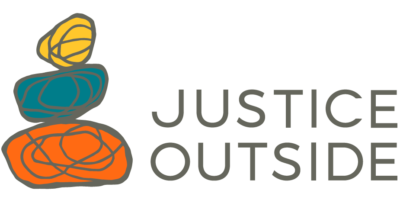How Has the Biden-Harris Administration Committed To Indigenous and Racial Justice in the 30×30 Effort?
In our 30×30 blog series, we’ve talked about the critical role that Indigenous leadership and racial justice have in 30×30 planning and implementation. In January 2021, President Biden recognized this fact in his Executive Order 14008, directing the Department of the Interior to develop guidelines to achieve 30×30 nationally. In this order, President Biden committed to “deliver environmental justice in communities all across America,[…] improve access to recreation, and increase resilience to wildfires and storms.” Building on the foundation of that order, the federal Administration released a work plan in May 2021 outlining how the U.S. can work collaboratively with Tribal nations, communities, states, and agencies to conserve and restore lands, waters, and wildlife within the United States. Principles of equity, access to nature, and community consultation as a key approach of the Administration’s 30×30 work plan are woven throughout.
As described in our first installment of this series, in 2021, the Biden Administration announced a U.S. federal 30×30 work plan, which calls for a decade-long, voluntary effort to advance locally led conservation and restoration efforts across public, private, and Tribal lands and waters in order to, “create jobs and strengthen the economy’s foundation; tackle the climate and nature crises; and address inequitable access to the outdoors.” Many of the principles of leadership, sovereignty, equity, and access that the environmental justice movement has long demanded accountability to appear in the federal 30×30 work plan.¹
The work plan spells out the central role for the ancestral keepers and caretakers of these lands, including Indigenous communities:
Centering this effort on people also means recognizing the oversized contributions that farmers, ranchers, forest owners, fishers, hunters, rural communities, and Tribal Nations already make in safeguarding wildlife and open spaces for the benefit of the rest of the country, and therefore recognizing and encouraging these remarkable efforts.
—U.S. federal 30×30 work plan
The plan’s third, fourth, and fifth principles create support for locally-led and locally-designed conservation efforts, Tribal sovereignty and priorities, and the creation of jobs and healthy communities. In particular, the work plan directs federal agencies to “seek to support and help advance the priorities of American Indian, Alaska Native, Native [Hawai’ian], and Indigenous leaders, including those related to sustainable land management and the conservation of natural, cultural, and historical resources.”
In late 2021, the Biden-Harris administration called for “a new era of Nation-to-Nation Engagement,” stating, “The administration’s work is rooted in the President’s respect for the unique Nation-to-Nation relationship, commitment to the country’s trust and treaty responsibilities, and desire to strengthen Tribal sovereignty and advance Tribal self-determination.” We also look to this quote from Secretary of the Interior, Deb Haaland, a member of the Pueblo of Laguna:
I believe we’re in the beginning of a new era, an era in which our Indigenous knowledge is valued and respected, in which Indigenous leadership has a seat at the table to make decisions about communities, in which we have an opportunity to rise above the challenges our people face and build a brighter future for our children, our grandchildren, and future generations.
Nowhere is this more important than in our work to address the climate crisis. Humanity is facing one of the biggest challenges of our time. With the Indigenous knowledge, our world can usher in a new era in which we restore balance to our natural world to meet this moment and move our planet toward a more sustainable future. Indigenous ancestors lived sustainably and survived famine and drought with the understanding that future generations would rely on their hard work and sacrifice in moments like these. There are Indigenous groups around the world that have witnessed differences in their surroundings and detected climate change because they are in tune with their environment. It’s by valuing and using Indigenous knowledge that we can move forward and confront climate threats without leaving anyone behind.
— Deb Haaland, Secretary of the Interior
¹While the Administration and federal agencies may refer to this body of work as “America the Beautiful” we choose not to amplify that phrase. The song America the Beautiful glorifies the history of colonial expansion across the United States, and obscures the violent displacement of Indigenous peoples during the colonization period through present day. We refer to the report so entitled as the “30×30 work plan.”
This blog is the third in a series by Justice Outside exploring Indigenous and racial justice inside 30×30. 30×30 is a U.S. and global initiative to protect 30% of our lands and waters by 2030. Justice Outside’s commitment within 30×30 is to ensure that the leadership and voices of Black, Indigenous, and communities of color are at the center of our shared efforts to protect and conserve lands and waters.
Read the others:
1] “What is 30×30?”
2] “Why Black, Indigenous, and Communities of Color Should Be At the Center of 30×30 Conservation Efforts”
3] The Role of Indigenous, Racial Justice, and Environmental Justice Groups in the U.S. Federal 30×30 Work Plan (this blog)
4] What Are the Roles of Justice Outside and Other Environmental Justice Groups in 30×30?
#30×30

